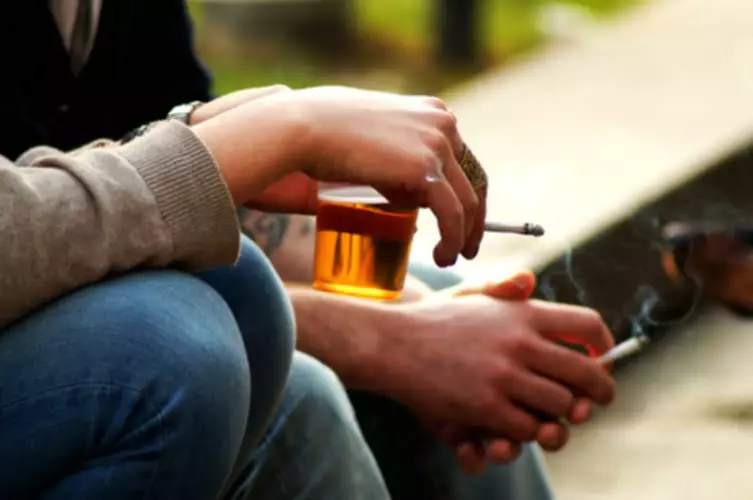
However, one could theoretically also block the development of tolerance if the treatment blocks or reverses the neuroadaptation that is triggered by the acute neuronal-activating or -inhibiting effects of alcohol. Khanna et al. (1991b, 1992a, 1992c) tested the effects of different NMDA receptor antagonists on the development of rapid tolerance in male rats in the tilt-plane test. Pretreatment with the NMDA receptor antagonist (+)MK-801 but not the inactive isomer (−)MK-801 blocked the development of rapid tolerance (Khanna et al., 1991b). A similar effect was found with pretreatment with another NMDA receptor antagonist, ketamine (Khanna et al., 1992a). Additionally, pretreatment with these NMDA receptor antagonists had no effect on the development of rapid tolerance in rats that were only placed on the tilt-plane without actually tilting the plane on day 1 (Khanna et al., 1997).
How long does it take for your tolerance to change?
With heavy drinking, the liver also adapts and becomes more efficient at eliminating alcohol. Alcohol tolerance is an unavoidable part of regular alcohol use, but it can lead to harmful consequences if left unchecked. In that case, you should be aware of the risks and take steps to manage the situation before it degenerates into dependence or addiction. If you think your alcohol tolerance is becoming a problem and you can’t seem to manage it, it would be helpful to speak with a professional. A doctor would assess your drinking habits to determine whether your tolerance is within acceptable limits. They may also recommend lifestyle changes or other strategies to reduce your tolerance.
Tips to change your relationship with alcohol
However, a description of these systems is beyond the scope of the present mini-review. Reducing intake or stopping drinking may help a person feel more in control of their consumption and avoid experiencing a reaction or symptoms related to their alcohol use. This article looks at the links between alcohol and sickness and provides an overview of alcohol intolerance, including the signs, when to consult a doctor, and causes. Finally, it examines how alcohol tolerance changes over time and offers support and guidance on alcohol use. Drinking within the low risk drinking guidelines and having several drink-free days each week can help keep health risks from the effects of alcohol low.
- If a person develops a mild intolerance to alcohol or an ingredient in beverages, they may be able to manage it themselves simply by avoiding or limiting alcohol or certain drinks.
- Also, if your symptoms seem to be linked to an allergy or a medication you’re taking, see your doctor.
- This article looks at the links between alcohol and sickness and provides an overview of alcohol intolerance, including the signs, when to consult a doctor, and causes.
- While cirrhosis scars from excessive drinking are irreversible, quitting alcohol and leading a healthier lifestyle can help your liver heal from alcohol-related liver disease.
Signs of alcohol intolerance
The capacity to drink more and more is a serial development of high alcohol tolerance, which some people may perceive to be a good thing, but it is not. AT may not show signs of physical intoxication, but its development typically paves the way for serious health issues. In the moving belt test, rats are trained to walk on a belt that moves over a shock grid.

Tolerance Risks: Returning To Alcohol After A Break From Drinking
- This may start to counteract the effects of alcohol, leading to diminishing effects over time.
- The Canadian Centre for Addictions offers treatment for alcohol abuse and addiction in an environment that inspires lasting change.
- Male rats that were intracerebroventricularly treated with nitric oxide donors developed greater rapid alcohol tolerance in the tilt-plane test (Wazlawik and Morato, 2003).
- Steps to Lowering Your Alcohol ToleranceDeveloping alcohol tolerance can indicate greater problems for you down the road, so it is best not to ignore the signs of tolerance.
- Alcohol tolerance refers to a lower effect of alcohol with repeated exposure.
- Almost everyone is born with low alcohol tolerance, and regularly consuming large amounts of alcohol will lead to high alcohol tolerance.
Functional tolerance describes the most basic kind of tolerance developed by most people who drink regularly over a period of time. Alcohol tolerance, for the most part, is something that you develop over the course https://ecosoberhouse.com/ of your experience with alcohol. How quickly you lose tolerance when you quit alcohol consumption may depend on several factors. Even if we handled alcohol well in early adulthood, this can change as we age.
Cues Associated With Drinking
” When you find out the answer to this question, you are well on your way to learning more about what types of alcohol to avoid. You must realize that not all alcoholic beverages will have the same strength. For instance, a whole beer can is less strong than a few servings of vodka and whiskey. Thus, when you sip a few servings of whiskey, you will most likely become more drunk. Many people want to build alcohol tolerance to party for a long time with friends and drink as much as they can without losing their senses, vomiting or experiencing nausea. According to a 2015 global drug survey, Ireland has the highest rates of alcohol consumers at risk of dependence, and its people also report needing more alcohol to get drunk than all others.
Both (+)MK-801 and ketamine also blocked rapid tolerance and rapid cross-tolerance between alcohol and chlordiazepoxide in the tilt-plane test (Khanna et al., 1992c). D-cycloserine treatment before but not after intoxicated practice in the tilt-plane test that occurred on day 1 facilitated the development of rapid tolerance to a typically subthreshold dose of alcohol (Khanna et al., 1995a). In a within-system adaptation, repeated alcohol administration would be argued to be the process by which the primary cellular response to the drug within a given neurochemical circuit itself adapts to neutralize the effects of the drug.

It should not be used in place of the advice of your physician or other qualified healthcare providers. Unfortunately, the only treatment for alcohol intolerance is avoiding alcohol. No drug will help you avoid the symptoms of how to build alcohol tolerance alcohol intolerance or lessen your cancer risk. If you can’t stop heavy drinking or binge drinking, then you need treatment for alcohol addiction. It takes more than a period of abstinence to stop an alcohol use disorder.

Tips to avoid alcohol tolerance

Alcohol increases the potency of GABA, which is why it has sedating and relaxing effects. But when we drink in a new environment – such as going to the pub for the first time in six months – the compensatory response is not activated, making us more prone to experiencing alcohol’s effects. So even if you’ve still been consuming large amounts of alcohol at home during lockdown, you may find you feel alcohol’s effects to a greater degree when drinking the same amount as normal in a pub or bar. You may think that not having alcohol interfere with your behavior and ability to function like it used to be is a positive occurrence.